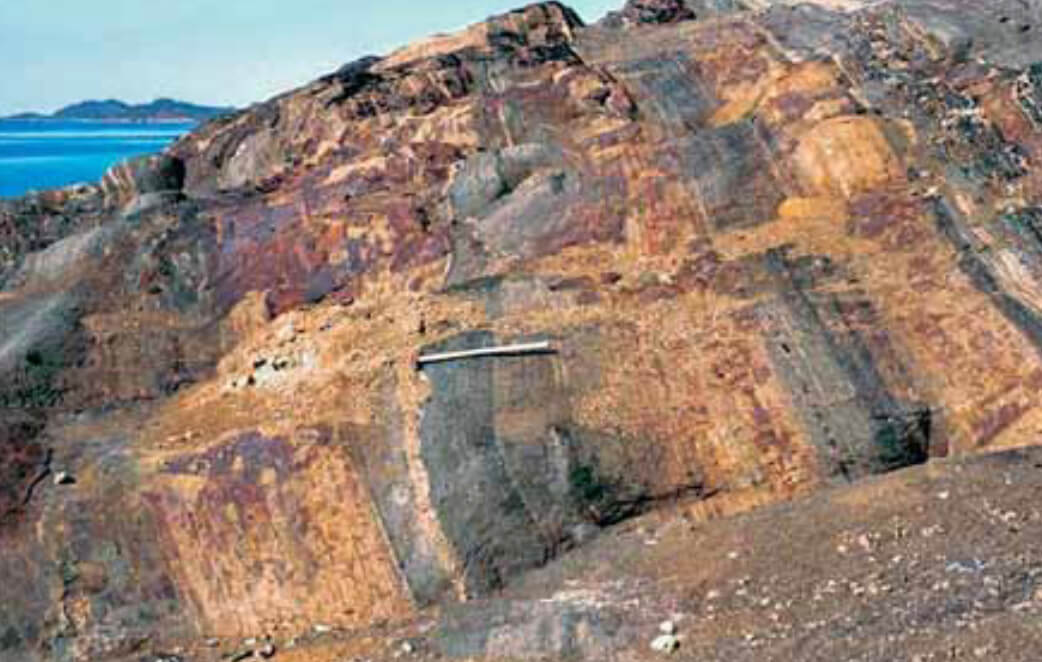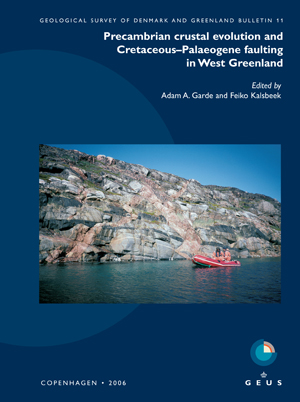
How to Cite
Share
Abstract
Pb-isotopic data for magnetite from amphibolites in the Nagssugtoqidian orogen, central West Greenland, have been used to trace their source characteristics and the timing of metamorphism. Analyses of the magnetite define a Pb-Pb isochron age of 1726 ± 7 Ma. The magnetite is metamorphic in origin, and the 1726 Ma age is interpreted as a cooling age through the closing temperature of magnetite at ~600°C. Some of the amphibolites in this study come from the Naternaq supracrustal rocks in the northern Nagssugtoqidian orogen, which host the Naternaq sulphide deposit and may be part of the Nordre Strømfjord supracrustal suite, which was deposited at around 1950 Ma ago. Pb-isotopic signatures of magnetite from the Arfersiorfik quartz diorite in the central Nagssugtoqidian orogen are compatible with published whole-rock Pb-isotopic data from this suite; previous work has shown that it is a product of subduction-related calc-alkaline magmatism between 1920 and 1870 Ma. Intrusion of pegmatites occurred at around 1800 Ma in both the central and the northern parts of the orogen. Pegmatite ages have been determined by Pb stepwise leaching analyses of allanite and monazite, and source characteristics of Pb point to an origin of the pegmatites by melting of the surrounding late Archaean and Palaeoproterozoic country rocks. Hydrothermal activity took place after pegmatite emplacement and continued below the closure temperature of magnetite at 1800– 1650 Ma. Because of the relatively inert and refractory nature of magnetite, Pb-isotopic measurements from this mineral may be of help to understand the metamorphic evolution of geologically complex terrains.
How to Cite
Share
Copyright (c) 2006 Henrik Stendal, Karsten Secher, Robert Frei

This work is licensed under a Creative Commons Attribution 4.0 International License.
Downloads
Editors: A.A. Garde and F. Kalsbeek
Central West Greenland exposes a large region of Archaean continental crust that was rifted and subsequently reworked in the Palaeoproterozoic during the Nagssugtoqidian and Rinkian orogenies. The southern margin of the Nagssugtoqidian orogen with its deformed Kangâmiut dykes is a classic example of an orogenic [...]









